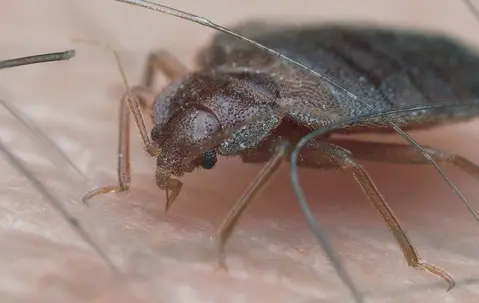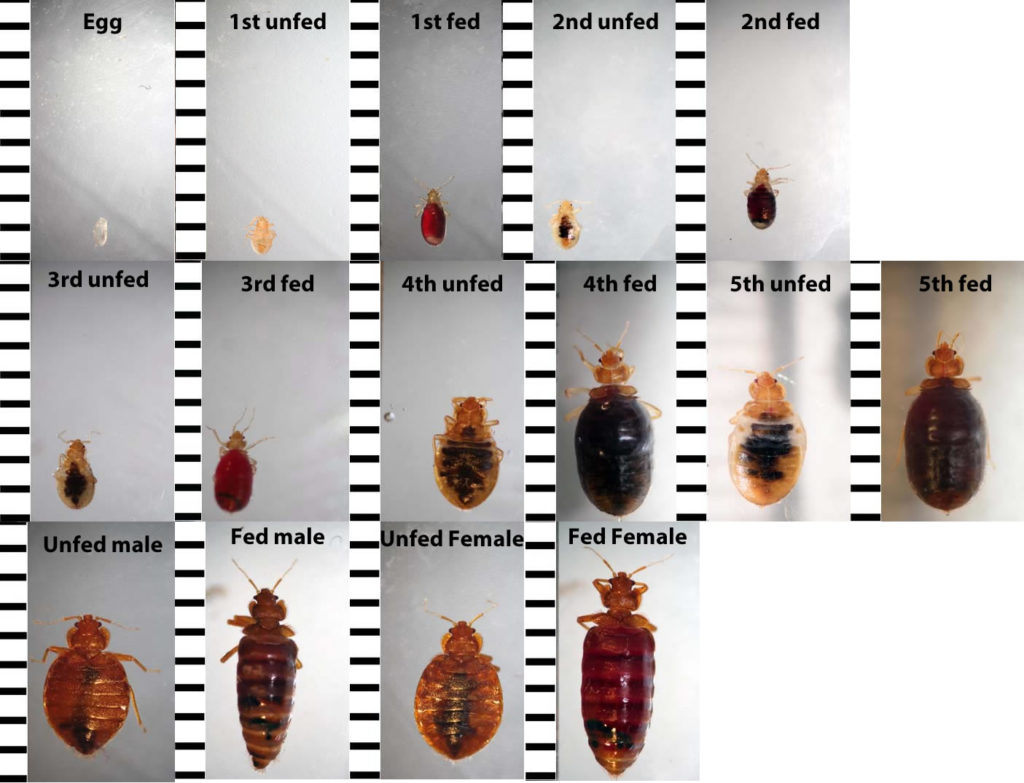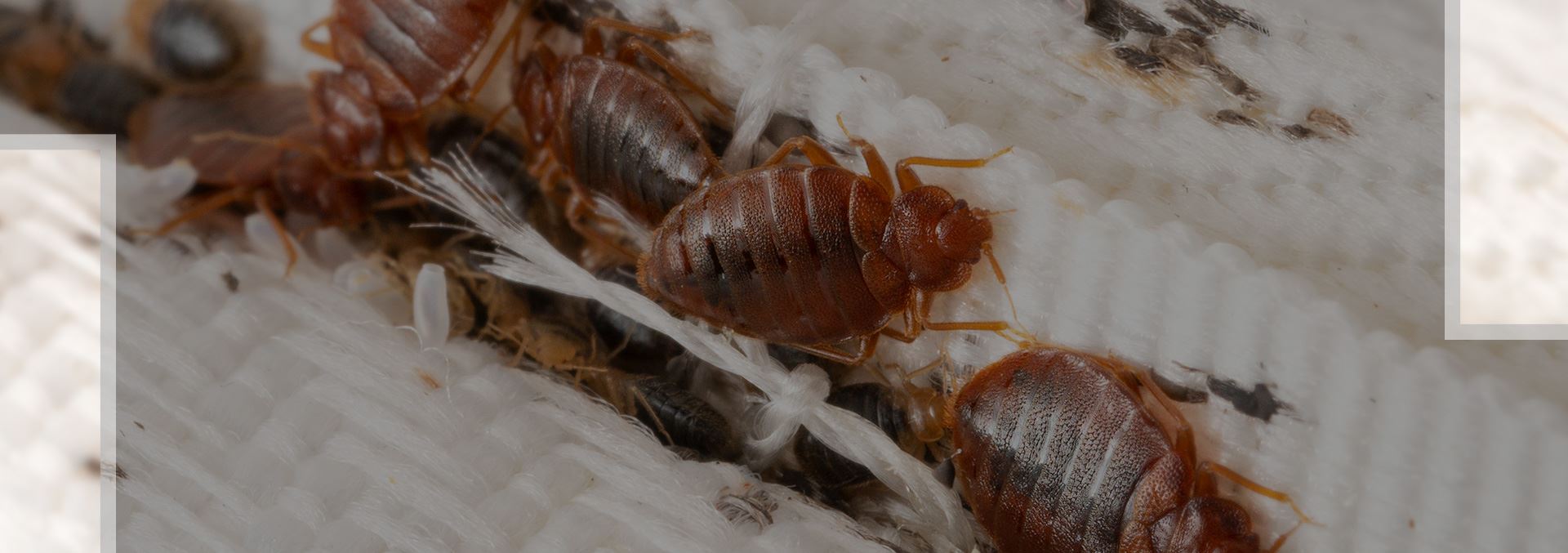Bed Bug Treatments in Florida
Exterminator Services for Coral Springs, Margate, and Coconut Creek
Florida’s subtropical warmth, characterized by gentle winters and steady humidity, tempts people seeking sunshine – but it also draws pests. Among the most troubling are bed bugs, tiny insects that feed on blood during nighttime hours and hide in mattress seams, upholstery folds, or narrow crevices by day. In Coral Springs, along with nearby areas like Margate and Coconut Creek, bed bugs can flourish year-round if nobody catches their early signs. This service page explains how bed bugs thrive in Florida’s environment, which signs indicate their presence, and why employing a professional bed bug exterminator for bed bug treatments is the most reliable way to remove these nocturnal nuisances. By taking swift action at the first hint of bed bug bites or mattress stains, you protect occupants from sleepless nights, escalating infestations, and extensive control measures later on.
Why Bed Bugs Flourish in Florida

- Mild Winter Temperatures
In northern states, sub-freezing winters sometimes slow bed bug populations, forcing them into dormancy for months. Florida’s mild winter rarely gets cold enough for sustained periods, letting bed bugs feed and reproduce nearly all year. Indoors, consistent temperature control – either heating or air conditioning – further spares them from any significant climate disruptions, enabling small populations to burgeon if left unaddressed. - Frequent Travel and Turnover
Coral Springs, Margate, and Coconut Creek, being part of the greater South Florida region, see occupant mobility as people relocate for work or short-term stays. Bed bugs frequently hitch rides in suitcases, folded clothing, or used furniture. Even a single pregnant female introduced unnoticed into a new residence can quickly form a fresh colony if occupant routines don’t catch the initial signs. - Minimal Seasonal Dormancy
In cooler regions, bed bugs can enter a semi-dormant phase during prolonged frosty weather, limiting feeding and reproduction. South Florida seldom experiences such extended cold, so bed bugs remain active and breed consistently, resulting in multiple generations each year and a faster escalation than in climates with harsh winters. - Stable Indoor Conditions
Florida’s year-round warmth, combined with occupant preferences for comfortable indoor environments, means bed bugs find stable temperatures (65–85°F) that suit their development. With consistent hosts (people sleeping or resting), plus furniture or crevices to hide in, bed bugs inhabit homes or businesses easily, feeding, laying eggs, and repeating the cycle unless occupant vigilance or professional methods intervene. - Shared Buildings and Short-Term Rentals
In multi-unit dwellings – like apartments, condos, or extended-stay lodgings – bed bugs can traverse adjacent units through cracks, wiring, or ductwork if only one occupant addresses the problem. Meanwhile, short-term rentals with frequent guest turnover risk unnoticed bed bug introductions from travelers. Early occupant checks – scanning for droppings or blackish stains on bedding – hamper colony establishment.
Telltale Signs of Bed Bugs
- Unexplained Red Bites or Welts
Bed bugs feed at night, leaving tiny, itchy bumps on exposed arms, necks, or legs. Some individuals notice lines or clusters of bites upon waking, while others have mild or delayed skin reactions. If occupant bites reappear daily without any visible fleas or mosquitoes, bed bugs become a primary suspect. - Dark Specks or Rust Stains on Linens
After feeding, a bed bug might be crushed inadvertently, producing rust-colored smears on pillows or sheets. Small blackish spots – bed bug droppings – can accumulate around mattress seams or corners. Lifting or flipping bedding can confirm these faint stains, indicating ongoing feeding activity. - Egg Shells and Shed Skins
As bed bugs progress from nymph to adult, they molt, discarding translucent exoskeletons. Their eggs, around 1 millimeter, appear whitish and stick to hidden surfaces. Checking behind headboards or under cushions with a flashlight often reveals these shells, signaling multiple life stages thriving in the area. - Possible Musty Odor
Heavy bed bug infestations can produce a sweetish or musty smell from their pheromones, though not every colony becomes large enough for occupants to detect an odor. Physical evidence (bites, droppings, shells) remains the primary, most reliable indicator. - Active Bugs in Crevices
Adult bed bugs measure about 5–7 millimeters long, flattened, and oval, turning reddish-brown after feeding. Nymphs are smaller, paler, and less visible but still discoverable with close inspection. Pulled-back sheets or upended cushions may expose them scuttling quickly to darker hideouts.
Consequences of Delaying Bed Bug Treatment
- Rapid Population Growth
A single female bed bug lays multiple eggs daily, which hatch within a couple of weeks under Florida’s mild conditions. A tiny oversight can balloon into dozens or hundreds of bed bugs infiltrating various rooms, feeding on unsuspecting occupants, and complicating eradication down the line. - Escalating Anxiety and Sleep Disruption
Knowing insects feed while you rest triggers significant stress and insomnia for many. Occupants might fear bedtime, frequently launder linens, or avoid entire rooms. Prompt elimination spares them extended psychological toll and fatigue from lost sleep. - Potential Spread to Neighbors
In shared structures – apartments or townhomes – bed bugs slip through shared wiring or along plumbing lines if occupant action is partial. Coordinated building-wide inspections or treatments help stifle expansions across units, preventing a single outbreak from escalating into widespread infiltration. - Damage to Reputation
For short-term rentals or businesses, bed bug sightings provoke negative occupant reviews, tarnishing brand image. Swift occupant or professional solutions protect occupant confidence, preserve property values, and ensure returning clientele.

Why a Professional Bed Bug Exterminator Is Essential
- Thorough Inspection
A bed bug exterminator checks seam by seam, scanning mattresses, box springs, couches, and baseboards for droppings, egg clusters, or adult bugs. Proper identification clarifies if it’s bed bugs, fleas, or other insects, shaping the correct extermination plan. - Complete Elimination of All Life Stages
Bed bugs exist in egg, nymph, and adult forms. Removing only visible adults misses hidden eggs poised to hatch. Professionals deploy multi-method tactics—like steam, vacuuming, insect growth regulators, or heat—to eliminate bed bugs at every phase. This synergy hampers re-infestations from overlooked eggs. - Targeted Chemical Application
Over-the-counter sprays can push bed bugs deeper into cracks or saturate occupant areas. Exterminators place residual insecticides or insect growth regulators in discreet corners or furniture seams where bed bugs dwell. Occupants typically wait for dryness, returning to a more comfortable environment quickly. - Follow-Up and Occupant Education
Since eggs can hatch weeks later, scheduling re-checks or occupant-based monitoring ensures no newly emerged nymphs survive. Exterminators recommend practices—like encasing mattresses, interceptors under bed legs, or routine vacuuming—for occupant involvement in preventing future outbreaks.
Methods Used in Bed Bug Treatments
- Inspection and Mapping
Professionals methodically search all potential bed bug hideouts—like mattress seams, behind pictures, or in the underside of nightstands—and document each active or suspicious spot. Determining the infestation’s extent shapes whether heat treatments, localized sprays, or entire-building strategies are warranted. - Vacuuming and Steam
One initial step might include vacuuming surfaces to reduce adult bug and egg counts, then applying high-temperature steam to kill those hiding deeper. Steam effectively destroys eggs, which chemical sprays might fail to penetrate thoroughly. - Insect Growth Regulators (IGRs)
IGRs hamper egg or nymph development, cutting off subsequent generations from reaching adulthood. Professionals apply these regulators near baseboards, furniture seams, or bed frames where bed bugs likely travel. Over time, nymph populations dwindle. - Residual Insecticides
Directed sprays or dust along known bed bug runways produce lethal barriers. As bed bugs cross these zones, they pick up insecticides. Occupants often leave areas temporarily until chemicals dry, ensuring minimal occupant or pet exposure. - Heat Treatments
For major or multi-room infestations, raising temperatures above ~120°F kills bed bugs at all stages, saturating hidden areas behind walls, in electronics, or within furniture. Occupants temporarily vacate while specialized heaters operate, returning once interior temperatures normalize.
Covering Coral Springs, Margate, and Coconut Creek
Coral Springs: Renowned for its family-friendly neighborhoods, open green spaces, and active community. Bed bugs can sneak in via luggage after vacations or secondhand furniture acquisitions. Occupants noticing black stains on sheets or unusual bites upon waking should investigate quickly—professional interventions plus occupant vigilance hamper further growth.
Margate: Combining suburban developments with older homes, Margate experiences occupant or building expansions that displace or introduce pests. Quick occupant steps—like verifying used items for bed bug droppings or eggs—reduce infiltration. Thorough housekeeping plus professional solutions ensure no small introduction spreads into multiple bedrooms.
Coconut Creek: Known for its nature preserves and tranquil residential zones, Coconut Creek sees occupant transitions and potential hidden bug carriers from yard sales or short-term rentals. Daily occupant awareness—like scanning bed linens, vacuuming corners, or regular dog grooming—plus swift extermination stifles bed bug expansions quickly.

Why Our Bed Bug Treatments Work
- Florida-Focused Expertise
Because southwestern Florida’s winter seldom retards bed bug activity, occupant diligence plus layered tactics—like steam, insect growth regulators, and residual sprays—address bed bugs from egg to adult. This synergy ensures year-round coverage, outpacing bed bug breeding cycles. - Precision with Minimal Chemical Footprint
We target bed bug hideouts precisely—mattress seams, furniture cracks, baseboard edges—delivering insecticides or heat where bugs actually dwell. Occupants typically face minimal downtime, returning once solutions dry or once heat levels normalize, balancing occupant comfort and lethal bed bug contact. - Prevention Recommendations
Removing an infestation is half the battle. Occupant collaboration—like encasing mattresses, storing luggage off floors, or routine vacuuming—preempts re-infestations if bed bugs attempt to hitch rides indoors again. Consistent occupant vigilance cements a lasting bed bug defense. - Follow-Up and Monitoring
Because eggs hatch weeks after initial contact, occupant re-checks or professional revisit ensure newly emerged nymphs also face lethal conditions. If occupant suspicions persist—like fresh bites or black specks on sheets—further spot treatments finalize eradication, guaranteeing occupant calm.
Next Steps
Have you discovered unexplained red bites each morning, small black pepper-like specks on bed linens, or suspicious insects scurrying near mattress seams at night? Contact us to learn more or schedule your service. Our bed bug exterminator strategies in Coral Springs, Margate, and Coconut Creek detect infestations across all rooms and furniture, wiping out bed bugs from egg to adult. Swift occupant action spares you from extended biting cycles, occupant anxieties, and extensive deep-cleaning efforts to quell the outbreak.
By combining occupant housekeeping—like vacuuming or laundering bedding weekly in hot water—and targeted extermination measures—steam, insect growth regulators, residual insecticides, or heat treatments—bed bugs encounter lethal conditions at each life stage. Freed from hidden pests waiting to feed each night, your property’s occupants enjoy restful sleep, peace of mind, and Florida’s lively environment without the constant dread of unexpected bites or unsightly black stains.
Maintaining a Bed Bug-Free Environment
- Check Secondhand Items: Thoroughly inspect used furniture, mattresses, or décor for dark spots, shells, or live bugs before bringing them inside. If uncertain, treat or quarantine them outside main living spaces.
- Frequent Vacuuming: Vacuum carpets, rugs, and corners at least weekly, discarding vacuum contents in sealed plastic outdoors. This disrupts potential bed bug eggs or wandering adults.
- Wash Bedding on Hot Cycles: Laundering sheets, pillowcases, and blankets in hot water—followed by a high-heat dryer cycle—kills any stray bugs or eggs that may have landed on linens.
- Encasements and Interceptors: Using bed bug–proof covers on mattresses and box springs denies new infestations from nesting inside. Interceptors under bed legs catch any bugs climbing or descending, indicating if new bed bugs arrive.
- Luggage Precautions: After traveling or receiving visitors, inspect suitcases or store them off floors. Launder travel clothes promptly on hot settings, vacuuming suitcases if you suspect contact with infested locations.
With occupant diligence, routine housekeeping, and timely professional exterminations, southwestern Florida properties remain bed bug–free. Despite Florida’s mild weather fueling near-constant breeding if left unmanaged, consistent occupant vigilance and specialized pest control hamper bed bugs from regaining a foothold. Homeowners and businesses in Coral Springs, Margate, or Coconut Creek can thus embrace Florida’s year-round sunshine unburdened by persistent bug bites or the sleepless nights bed bugs impose.
